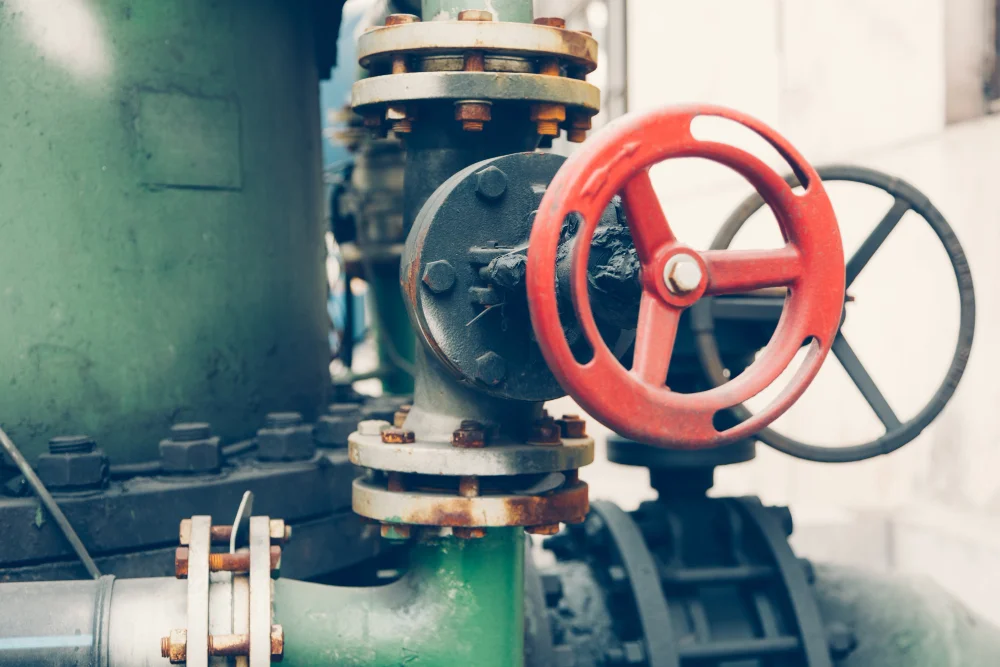The role of Net Positive Suction Head (NPSH) in preventing pump cavitation is of paramount importance in maintaining the reliability and efficiency of centrifugal pumps. Cavitation is a common issue in pump systems and can lead to serious damage if not properly addressed. It plays a crucial role in preventing pump cavitation, a phenomenon that can wreak havoc on the efficiency and longevity of pumps.
What is NPSH?
NPSH stands for Net Positive Suction Head, and it is a crucial parameter in pump design and operation. It is a measure of the amount of pressure energy available at the pump’s suction side (the inlet) to prevent the formation of vapor cavities or bubbles. In simpler terms, NPSH represents the pressure head available to keep the liquid in a non-vapor state as it enters the pump.
NPSH takes into account factors like the atmospheric pressure, the velocity of the fluid, and the friction losses in the suction line. It’s crucial because it ensures that the pump is working under conditions that prevent cavitation, maintaining its performance and longevity.
Understanding Cavitation
Cavitation occurs when the pressure at the suction side of the pump drops to a level where it is lower than the vapor pressure of the fluid being pumped. When this happens, the liquid starts to vaporize, forming bubbles or cavities. These vapor bubbles are then carried into the higher-pressure regions of the pump, such as the impeller, where they collapse or implode. This implosion generates shockwaves and intense localized pressure, causing erosion, pitting, and damage to the pump components, particularly the impeller and casing.
Cavitation can lead to a range of issues, including reduced pump efficiency, increased maintenance costs, decreased pump performance, increased noise and vibration, and even complete pump failure if left unaddressed. To prevent cavitation, it is crucial to ensure that the NPSH available (NPSHa) is greater than the NPSH required (NPSHr) for the pump.
Challenges Associated with Cavitation
Cavitation in pumps poses significant challenges that can impact pump performance, efficiency, and overall reliability. Here are some key challenges associated with cavitation:
Erosion and Damage to Pump Components: Cavitation causes the formation and collapse of vapor bubbles in the pump, leading to intense shockwaves. These shockwaves result in erosion and damage to pump components, especially impellers, casings, and other surfaces exposed to the collapsing bubbles.
Reduced Pump Efficiency: The presence of cavitation decreases the pump’s overall efficiency. As vapor bubbles collapse, they create a non-uniform flow that disrupts the smooth operation of the pump. This disruption leads to energy losses and a decrease in pumping efficiency.
Increased Maintenance Costs: Cavitation-induced damage necessitates frequent maintenance and repairs. Repairing or replacing damaged pump components can result in increased downtime and operational costs. Preventive maintenance becomes crucial to address cavitation-related issues promptly.
Noise and Vibration: Cavitation generates noise and vibration within the pump system. The sudden collapse of vapor bubbles produces a distinctive sound, often described as “popping” or “hammering.” Excessive noise and vibration not only indicate cavitation but can also contribute to structural fatigue and additional wear and tear.
Impaired Pump Operation and Reliability: Cavitation can lead to unstable pump operation. Fluctuations in flow rates, pressure, and performance become common, affecting the reliability of the pump. Unstable pump operation can have cascading effects on the entire system, impacting downstream processes and equipment.
Degradation of Pump Efficiency Over Time: Prolonged exposure to cavitation accelerates the degradation of pump efficiency over time. The cumulative effect of cavitation-related damage can lead to a gradual decline in pump performance, requiring more frequent maintenance interventions to maintain operational efficiency.
Risk of Cavitation-Induced Failure: Severe and unaddressed cavitation can lead to pump failure. The continuous erosion of impeller and casing surfaces, coupled with the mechanical stresses induced by collapsing bubbles, may eventually result in catastrophic pump failure. Such failures can lead to extended downtimes, costly repairs, and potential safety risks.
Challenges in Cavitation Detection and Monitoring: Detecting cavitation in its early stages can be challenging. Traditional methods may not provide real-time insights into the presence and severity of cavitation. Advanced monitoring technologies and sensors are required to accurately assess and address cavitation challenges.
Complexity in System Design: Designing a pump system that minimizes the risk of cavitation requires careful consideration of various factors, including NPSH, fluid properties, pump selection, and system configuration. Achieving an optimal balance among these factors can be complex and may require specialized engineering expertise.
Environmental and Economic Impacts: Pump cavitation can lead to inefficiencies in water and energy usage. In applications where large volumes of water are pumped, the environmental impact of energy wastage and increased water consumption can be significant. Additionally, the economic consequences of addressing cavitation-related issues can impact the overall cost of pump operation.
The Role of NPSH in Preventing Cavitation
NPSH Available (NPSHa): NPSHa is the measure of the pressure head on the suction side of the pump, which is available to maintain the liquid in a non-vapor state. It accounts for the pressure due to the liquid’s velocity and elevation (static head) and the pressure above the vapor pressure of the fluid. The NPSHa value is influenced by various factors, including the system design, pipe configurations, and the fluid properties.
NPSH Required (NPSHr): NPSHr represents the minimum pressure head required by the pump to avoid cavitation. It is a characteristic of the pump and is typically provided by the pump manufacturer. The NPSHr value depends on the pump’s design, operating speed, and impeller type.
To prevent cavitation, NPSHa should always be greater than NPSHr. If NPSHa falls below NPSHr, cavitation will occur, and the negative consequences will follow. It is essential to understand the factors that affect NPSHa and NPSHr to maintain a safe operating margin and prevent cavitation.
Factors Affecting NPSHa and NPSHr
1. NPSHa Factors:
System Design: The design of the entire pumping system, including the pipe diameter, length, and configuration, can significantly impact NPSHa. Smooth, well-designed piping minimizes pressure losses.
Elevation: The difference in elevation between the liquid source and the pump inlet contributes to NPSHa. Higher elevations result in greater NPSHa.
Liquid Properties: The vapor pressure vs. temperature of the liquid being pumped is a crucial factor. Liquids at lower temperatures typically have lower vapor pressures and require less NPSHa to prevent cavitation.
Pump Inlet Velocity: High flow rates can lead to high friction losses and a significant drop in pressure at the pump inlet. Slower inlet velocities and proper pipe sizing help maintain higher NPSHa.
2. NPSHr Factors:
Pump Speed: The NPSHr of a pump is influenced by its operating speed. Higher speeds generally result in higher NPSHr values.
Impeller Design: The type of impeller used in the pump affects NPSHr. Some impeller designs are more prone to cavitation than others.
Pump Geometry: The internal geometry of the pump, such as the impeller eye and vane profiles, plays a role in NPSHr.
NPSH Margins
To ensure safe and reliable pump operation, it is recommended to maintain a margin of NPSH (NPSH margin) by ensuring that NPSHa significantly exceeds NPSHr. The margin provides a buffer against any unforeseen changes or fluctuations in the system or process conditions. A typical NPSH margin can be around 20% or more.
Conclusion
In the world of pump operation, understanding and managing NPSH is critical to preventing cavitation, which can have detrimental effects on pump performance and longevity. Pump operators, engineers, and maintenance personnel should be aware of the factors that influence NPSHa and NPSHr and should carefully evaluate their systems to ensure a safe margin. By maintaining a positive NPSH margin, operators can prevent cavitation and its associated problems, ensuring that pumps operate efficiently and reliably in various industrial and municipal applications.


Videos